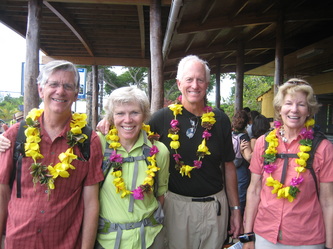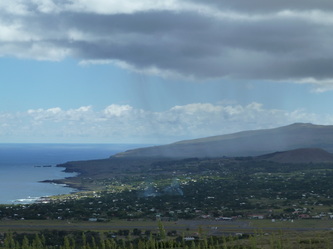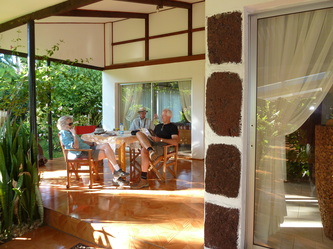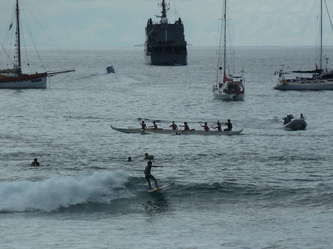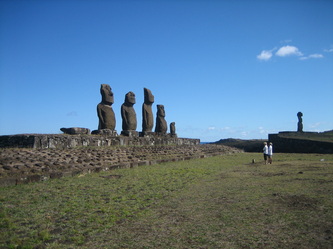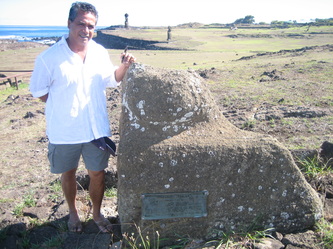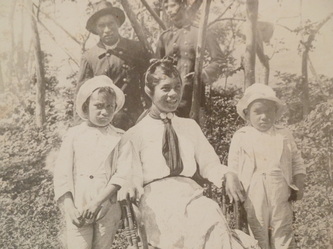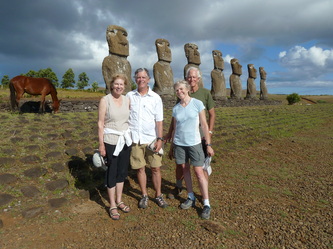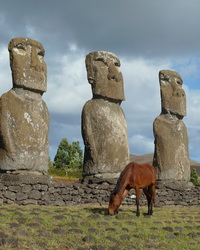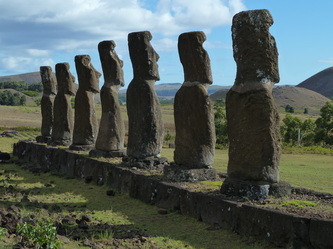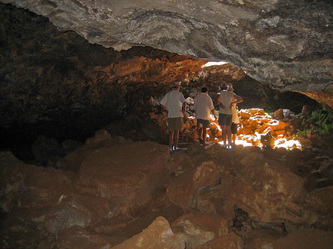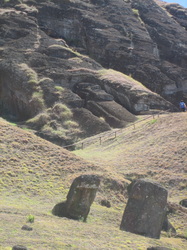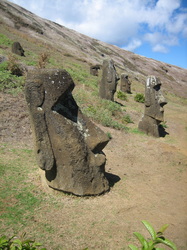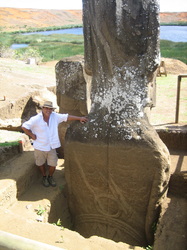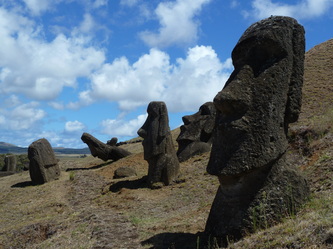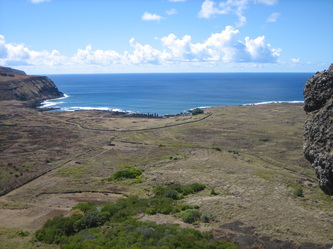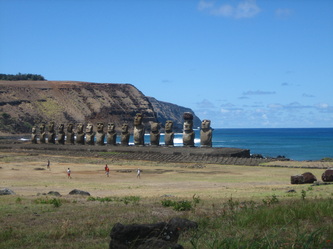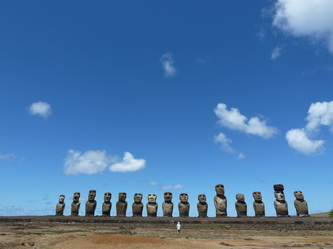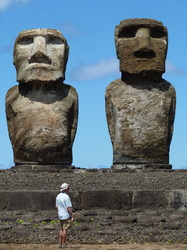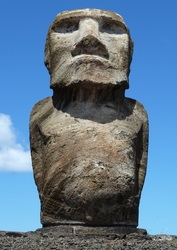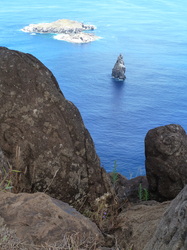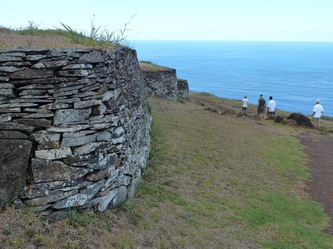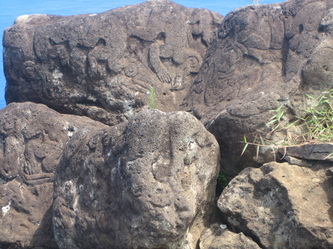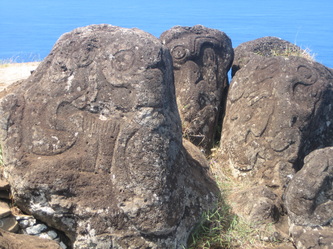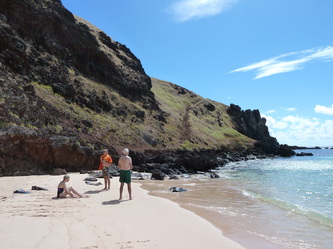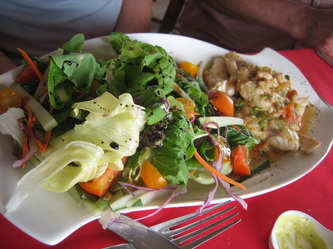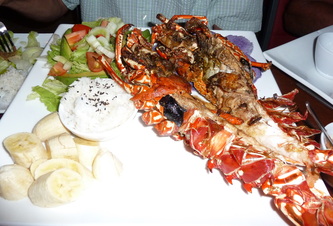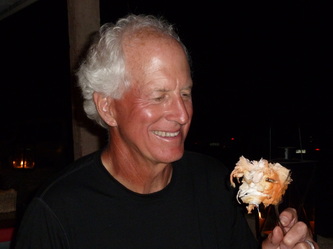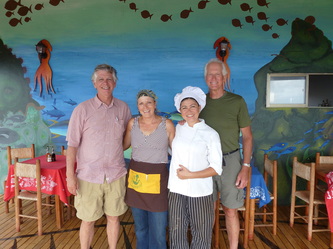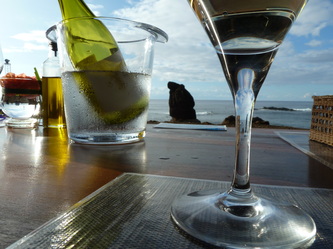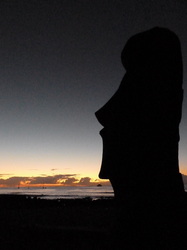Addendum
While others flew home, Jim, Pamela, JC, & Bobby battled the airlines (LAN) and made their way to Rapa Nui, also known as Easter Island or Isla de Pascua.
We were greeted in typical Polynesian style with leis by our host and guide for the stay, Ramon Pakomio. Ramon and his wife, Josie Mulloy, are owners of the bed-and-breakfast Aloha Nui. Josie is the granddaughter of William Mulloy, U.S. archaeologist who supported the Thor Heyerdahl (of Kon Tiki fame) expeditions. Mulloy stayed on to further investigate the island's history and to lead the restoration of many of the moai, the stone monoliths for which Easter Island is renowned. He helped confirm that Polynesians originally settled the island, not South Americans as Heyerdahl had proposed. Ramon descends from the royal family of Rapa Nui. His father also supported Thor Heyerdahl and William Mulloy, and his grandmother was the last "informer" who had been taught and was able to convey the oral history of the Rapa Nui people. Ramon and Josie were wonderful hosts and wonderful guides for our four days on the Isla.
The moai (the monolithic figures carved from rock) were quarried from the side of the Rano Raraku Volcano, then transported to the location of the tribe. The moai were erected on an ahu, in which ancestors were buried, and upon which one or more moai were erected over the centuries. The first moai date from the twelfth century. The practice of sculpting moai to commemorate a deceased tribal chief was interrupted by a civil war which raged for about 100 years and decimated the population. In all about 838 moai were started, 288 of them completed and erected on their ahus, 397 of them left at the quarry and the rest scattered on their way from the quarry to their ahu. The earliest moai were about 4 meters (13 feet) tall. The last one, 21 meters (70 feet) tall and weighing 80 tons, remains at the quarry! How the islanders were able to transport the moai is still a matter of controversy.
It is thought that the island, once so lush and fertile, was denuded of its forests of coconut palms and hardwood trees during the moai period, and that the resources needed to support such labor-intensive activity ran out. Perhaps as resources became scarce civil strife increased, during which every moai on the island was toppled by rival tribes! A new religion emerged in the 16th century with a new god, Make-Make, who was closely related to fertility, spring, and migratory seabirds. An annual pilgrimage to Orongo village of stone huts by tribal chieftans and birdmen who raced to see who could return first with an egg from an offshore island where migrating birds nested each spring. We viewed the offshore islands, the petroglyphs and the ruins of Orongo village, and the spectacular setting of this village on the edge of the volcano that dominates the northwest corner of Rapa Nui.
We were greeted in typical Polynesian style with leis by our host and guide for the stay, Ramon Pakomio. Ramon and his wife, Josie Mulloy, are owners of the bed-and-breakfast Aloha Nui. Josie is the granddaughter of William Mulloy, U.S. archaeologist who supported the Thor Heyerdahl (of Kon Tiki fame) expeditions. Mulloy stayed on to further investigate the island's history and to lead the restoration of many of the moai, the stone monoliths for which Easter Island is renowned. He helped confirm that Polynesians originally settled the island, not South Americans as Heyerdahl had proposed. Ramon descends from the royal family of Rapa Nui. His father also supported Thor Heyerdahl and William Mulloy, and his grandmother was the last "informer" who had been taught and was able to convey the oral history of the Rapa Nui people. Ramon and Josie were wonderful hosts and wonderful guides for our four days on the Isla.
The moai (the monolithic figures carved from rock) were quarried from the side of the Rano Raraku Volcano, then transported to the location of the tribe. The moai were erected on an ahu, in which ancestors were buried, and upon which one or more moai were erected over the centuries. The first moai date from the twelfth century. The practice of sculpting moai to commemorate a deceased tribal chief was interrupted by a civil war which raged for about 100 years and decimated the population. In all about 838 moai were started, 288 of them completed and erected on their ahus, 397 of them left at the quarry and the rest scattered on their way from the quarry to their ahu. The earliest moai were about 4 meters (13 feet) tall. The last one, 21 meters (70 feet) tall and weighing 80 tons, remains at the quarry! How the islanders were able to transport the moai is still a matter of controversy.
It is thought that the island, once so lush and fertile, was denuded of its forests of coconut palms and hardwood trees during the moai period, and that the resources needed to support such labor-intensive activity ran out. Perhaps as resources became scarce civil strife increased, during which every moai on the island was toppled by rival tribes! A new religion emerged in the 16th century with a new god, Make-Make, who was closely related to fertility, spring, and migratory seabirds. An annual pilgrimage to Orongo village of stone huts by tribal chieftans and birdmen who raced to see who could return first with an egg from an offshore island where migrating birds nested each spring. We viewed the offshore islands, the petroglyphs and the ruins of Orongo village, and the spectacular setting of this village on the edge of the volcano that dominates the northwest corner of Rapa Nui.
